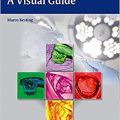Quantitative Skin Testing for Allergy: IDT and MQT, 2e
by Bradley F. Marple, Richard L. Mabry
Product Details:
- Paperback: 120 pages
- Publisher: Thieme; 2 edition (August 21, 2006)
- Language: English
- ISBN-10: 158890430X
- ISBN-13: 978-1588904300
- Amazon Price: $29.99
- Points to download: 50 Points
- Format: Original Publisher PDF
- File Size: 20.5 MB
- Download link below.
Download Link:
This post contains protected content. You must be logged in and have 50 points to unlock it.
Description:
Written by leading experts in the field, Quantitative Skin Testing for Allergy: IDT and MQT provides an invaluable guide to using quantitative skin testing methods in a modern allergy practice. The book reviews the well-established methodologies of intradermal dilutional testing (IDT) and prick testing and then goes on to describe the indications and techniques for blending these approaches through modified quantitative testing (MQT). Each method is presented in a concise way, guiding readers from preparation, to application of controls, to application of antigen, and to titration.
Features:
Coverage of the full range of skin testing techniques
allows the reader to compare and contrast various methods to determine which
is appropriate for each patient
Succinct text outlines rationale, technique, and
interpretation of the various methods described in the book
Practical tips on selecting appropriate allergens
Guidelines for how to prevent and manage allergic
emergencies
Advice on how to set up and prepare the allergy office
A glossary of common terms in otolaryngic allergy – ideal
for quick reference and review Otolaryngologists, residents, and nurses seeking
to expand and improve their techniques in diagnosing allergies will appreciate
this handbook. The book also serves as a valuable preparation aid for the fellowship exam of the American Academy of Otolaryngic Allergy.
Read more Read less Prime Book Box for Kids Story time just got better with Prime Book Box, a subscription that delivers hand-picked children’s books every 1, 2, or 3 months. Learn more






























